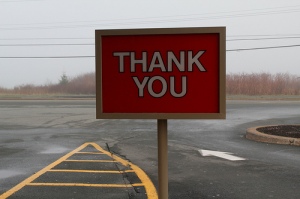Like all of higher education, libraries are under increasing pressure to demonstrate their value by showing how our collections and services impact the teaching and research missions of our institutions. I have argued before that a Return on Investment approach is a bad idea, and that the value of libraries is both very real and very hard to measure. And more recently I put out a plea for us to stop equating frequency of use with importance when it comes to library resources.
One major problem with almost all of the ways we try to measure the impact of our resources is that our measures are poor proxies for what we are really trying to assess. Even citation analyses aimed at measuring how much of our holdings are cited in dissertations and faculty publications produces a sloppy and imprecise measure of actual impact. Putting aside the issues of drive-by citations, coercive citations, and negative citations; it is also the case that scholars get materials from many sources besides the library. A citation to something in our collection is not a reliable indicator that the scholar used our copy of the item in their research. So, citation analyses are likely to overestimate the impact of our collections. Moreover, citation analyses provide no means of assessing the impact of our staff and our services.
Wouldn’t it be great if scholars would just tell us straight up when our collections, services, and staff contributed in tangible ways to their research? I mean, what if they just outright said things like:
The friendly staffs at Green Library, Crown Law Library, and Cubberley Education Library were also invaluable.
~Richard Cottle in Stanford Street Names, 2005
Many, many thanks for the guidance and invaluable resources provided by Maggie Kimball, Stanford University archivist, Dennis Copeland, director of the California Collection at the Monterey Public Library, … Joe Wible, head librarian at Hopkins Marine Station’s Miller Library; Neal Hotelling at the Pebble Beach archive …
~Susan Shillinglaw in A Journey into Steinbeck’s California, 2006
Obviously scholars do acknowledge the impact of libraries on their work — they do so in the acknowledgements sections of their books. In my opinion, acknowledgements provide the most direct measure of the impact of library collections and services on research.
If you want to hear more about how the amazing Jacque Hettel and I are analyzing acknowledgement data, come hear our snapshot talk at DLF. Jacque has created a text corpus of acknowledgements of Stanford libraries from books published over the past 10 years. We are busy analyzing those acknowledgements to understand which library departments get the most shout-outs (hint: Special Collections and InterLibrary Borrowing are in the lead) and whether there are disciplinary differences in whether scholars acknowledge the library generally and/or whether they single out specific individuals. We also plan to explore those acknowledgements that mention multiple libraries as a way to visualize networks of libraries across disciplines.
If we really want to know how our libraries impact scholarship, we should be paying careful attention to what scholars actually say about us when they are acknowledging those people and resources that contributed to their research.

4 Responses to “Sometimes scholars do tell us how the library impacted their work”